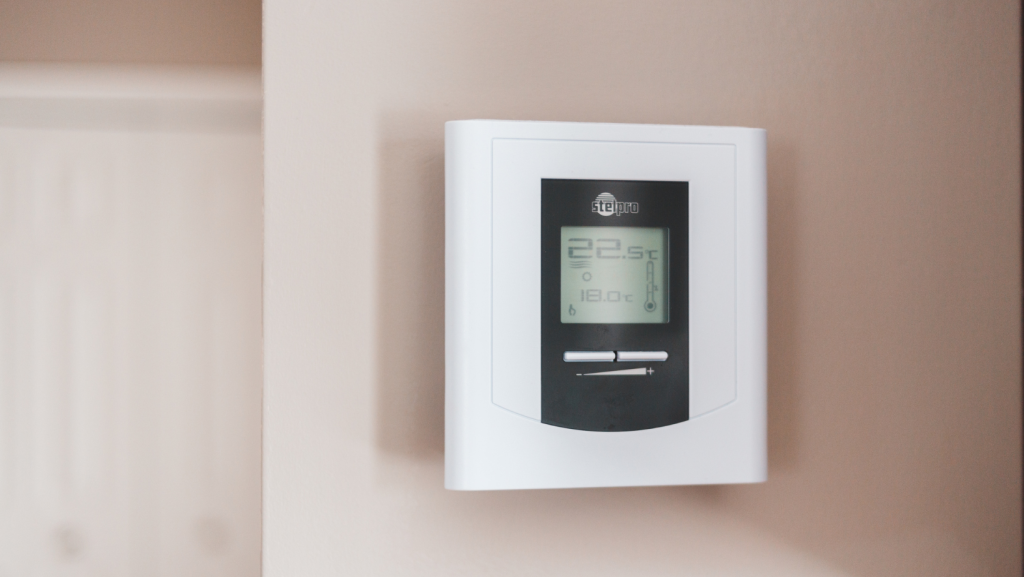Top 5 Energy Efficient Electrical Upgrades

With rising energy costs and growing environmental concerns, many homeowners and businesses are increasingly conscious of their energy consumption. In response, there is a growing interest in adopting sustainable practices and technologies that not only reduce utility bills but also minimize environmental impact. One of the most effective approaches to achieving these goals is through strategic electrical upgrades.
Electrical upgrades can yield substantial benefits beyond just cost savings. It represents a proactive step towards sustainability by reducing overall energy usage and carbon footprint. In this blog post, we get into five essential energy-efficient electrical upgrades that can transform how homes and businesses consume and manage electricity.

1. LED Lighting
Benefits of LED Lighting
LED (Light Emitting Diode) lighting is one of the most popular and energy-efficient lighting solutions available today. Compared to traditional incandescent and fluorescent bulbs, LEDs offer several advantages:
- Energy Savings: LEDs use up to 80% less energy than traditional bulbs, making them a cost-effective option.
- Long Lifespan: LED bulbs can last up to 25 times longer than incandescent bulbs, reducing the frequency of replacements.
- Environmental Impact: LEDs contain no hazardous materials and are fully recyclable, reducing their environmental footprint.
- Instant Lighting: LEDs provide full brightness instantly, without the warm-up time required by other bulbs.
- Durability: LED bulbs are more resistant to shock and vibration, making them ideal for various settings.
Installation Process
Installing LED lighting is a straightforward process that a professional electrician or a knowledgeable DIY enthusiast can do. Here are the basic steps:
- Choose the Right Bulbs: Select LED bulbs that match the fixtures and desired lighting levels for your home or business.
- Turn Off Power: Ensure the power is turned off at the breaker box before starting the installation.
- Remove Old Bulbs: Carefully remove the existing bulbs and dispose of them properly.
- Install LED Bulbs: Screw in the new LED bulbs, ensuring they are securely in place.
- Test the Lights: Turn the power back on and test the lights to ensure they are working correctly.
Cost-Effectiveness
While LED bulbs have a higher upfront cost compared to traditional bulbs, their long-term savings make them a worthwhile investment. The reduced energy consumption and extended lifespan lead to lower utility bills and fewer replacements, resulting in significant savings over time.

2. Smart Thermostats
Benefits of Smart Thermostats
Smart thermostats are a modern solution for managing your home’s heating and cooling systems more efficiently. These devices offer several benefits:
- Energy Savings: Smart thermostats can reduce energy usage by learning your schedule and adjusting the temperature accordingly.
- Remote Control: With smartphone apps, you can control your thermostat from anywhere, ensuring your home is always at the optimal temperature.
- Data Insights: Smart thermostats provide detailed energy usage reports, helping you identify areas for further savings.
- Compatibility: Most smart thermostats are compatible with various HVAC systems, making them a versatile option for many homes.
Installation Process
Installing a smart thermostat is a relatively simple process, but it may require basic electrical knowledge. Here are the general steps:
- Turn Off Power: Ensure the power to your HVAC system is turned off at the breaker box.
- Remove Old Thermostat: Carefully remove the existing thermostat, noting the wiring configuration.
- Install Smart Thermostat: Follow the manufacturer’s instructions to install the new smart thermostat, connecting the wires to the appropriate terminals.
- Configure Settings: Use the thermostat’s app or interface to set up your preferences and schedule.
- Test the System: Turn the power back on and test the thermostat to ensure it is working correctly.
Cost-Effectiveness
Smart thermostats typically have a higher initial cost than traditional thermostats, but they offer substantial long-term savings. By optimizing your heating and cooling schedules, smart thermostats can reduce energy usage by up to 15%, leading to lower utility bills and a quick return on investment.

3. Energy-Efficient Appliances
Benefits of Energy-Efficient Appliances
Upgrading to energy-efficient appliances is a significant step toward reducing your home’s energy consumption. These appliances offer several advantages:
- Lower Energy Consumption: Energy-efficient appliances use less electricity, reducing your overall energy usage.
- Cost Savings: Lower energy consumption translates to reduced utility bills.
- Environmental Impact: Energy-efficient appliances produce fewer greenhouse gas emissions, contributing to a healthier environment.
- Improved Performance: Many energy-efficient appliances feature advanced technologies that enhance performance and convenience.
Installation Process
The installation process for energy-efficient appliances varies depending on the specific appliance. However, here are some general guidelines:
- Choose the Right Appliances: Look for appliances with the ENERGY STAR® label, indicating they meet strict energy efficiency guidelines.
- Turn Off Power: Ensure the power is turned off before installing any electrical appliances.
- Remove Old Appliances: Carefully remove the existing appliances and disconnect them from the power source.
- Install New Appliances: Follow the manufacturer’s instructions to install the new energy-efficient appliances, ensuring all connections are secure.
- Test the Appliances: Turn the power back on and test the appliances to ensure they are functioning correctly.
Cost-Effectiveness
Energy-efficient appliances often come with a higher upfront cost, but the long-term savings on utility bills can offset this initial investment. Additionally, many governments and utility companies offer rebates and incentives for purchasing energy-efficient appliances, further enhancing their cost-effectiveness.

4. Solar Panels
Benefits of Solar Panels
Solar panels are a renewable energy solution that can significantly reduce your reliance on grid electricity. The benefits of solar panels include:
- Electrical Upgrades and Energy Savings: Solar panels generate electricity from sunlight, reducing your dependence on traditional energy sources.
- Environmental Impact: Solar energy is clean and renewable, producing no greenhouse gas emissions.
- Increased Home Value: Homes with solar panels often have higher property values due to their energy efficiency and sustainability.
- Energy Independence: Solar panels provide a degree of energy independence, protecting you from rising energy costs and power outages.
Installation Process for Electrical Upgrades
Installing solar panels is a complex process that typically requires professional installation. Here are the basic steps:
- Site Assessment: A professional will assess your property to determine its suitability for solar panels.
- System Design: The installer will design a solar panel system tailored to your energy needs and property layout.
- Permitting: The installer will obtain the necessary permits and approvals from local authorities.
- Installation: The solar panels, inverter, and other components will be installed, and the system will be connected to your electrical grid.
- Inspection and Activation: The system will be inspected and activated, ensuring it meets all safety and performance standards.
Cost-Effectiveness
Solar panels have a high initial cost, but the long-term savings on energy bills and potential incentives make them a worthwhile investment. The payback period for solar panels typically ranges from 5 to 10 years, after which the energy savings continue to accumulate.
5. Home Energy Monitoring Systems
Benefits of Home Energy Monitoring Systems
Home energy monitoring systems provide real-time insights into your energy usage, helping you identify areas for improvement. The benefits include:
- Electrical Upgrades and Savings: By monitoring your energy usage, you can make informed decisions to reduce consumption and lower your bills.
- Detailed Reports: Energy monitoring systems provide detailed reports and analytics, helping you understand your energy patterns.
- Appliance-Level Monitoring: Many systems offer appliance-level monitoring, allowing you to identify the most energy-hungry devices in your home.
- Alerts and Notifications: Receive alerts and notifications about unusual energy usage, helping you address issues promptly.
Installation Process
Installing a home energy monitoring system typically requires professional installation, although some systems are designed for DIY installation. Here are the general steps:
- Choose the Right System: Select a home energy monitoring system that meets your needs and is compatible with your electrical panel.
- Turn Off Power: Ensure the power is turned off at the breaker box before starting the installation.
- Install Sensors: Install the sensors on your electrical panel, following the manufacturer’s instructions.
- Connect to Wi-Fi: Connect the monitoring system to your home Wi-Fi network.
- Configure Settings: Use the system’s app or interface to set up your preferences and monitor your energy usage.
Cost-Effectiveness
Home energy monitoring systems have a relatively low upfront cost compared to other energy-efficient upgrades. The insights provided by these systems can lead to significant energy savings over time, making them a cost-effective investment.
Conclusion
Investing in energy-efficient electrical upgrades is a strategic choice that benefits both homeowners and businesses. These upgrades not only reduce energy consumption and lower utility bills but also contribute significantly to a sustainable and environmentally friendly future. By implementing LED lighting, smart thermostats, energy-efficient appliances, solar panels, and home energy monitoring systems, you can achieve substantial energy savings and enhance the overall efficiency of your property.
Each of these electrical upgrades plays a pivotal role in improving energy efficiency and minimizing environmental impact. LED lighting, renowned for its longevity and energy efficiency compared to traditional bulbs, transforms spaces while conserving electricity. Smart thermostats optimize HVAC systems, balancing comfort with substantial energy savings. Energy-efficient appliances combine advanced features with reduced energy consumption, making daily tasks more efficient and sustainable.
Solar panels represent a cornerstone of renewable energy adoption, harnessing sunlight to generate electricity and reduce reliance on non-renewable sources. Meanwhile, home energy monitoring systems empower users with real-time insights into energy usage, enabling proactive adjustments to further optimize efficiency.
When considering these electrical upgrades, it’s crucial to assess specific needs, budget considerations, and potential energy savings. Consulting with a professional electrician or energy consultant can provide expert guidance throughout the decision-making process and ensure a seamless installation experience. By making informed choices and integrating these upgrades, homeowners and businesses can enjoy enhanced energy efficiency, cost-effectiveness, and a positive environmental impact.